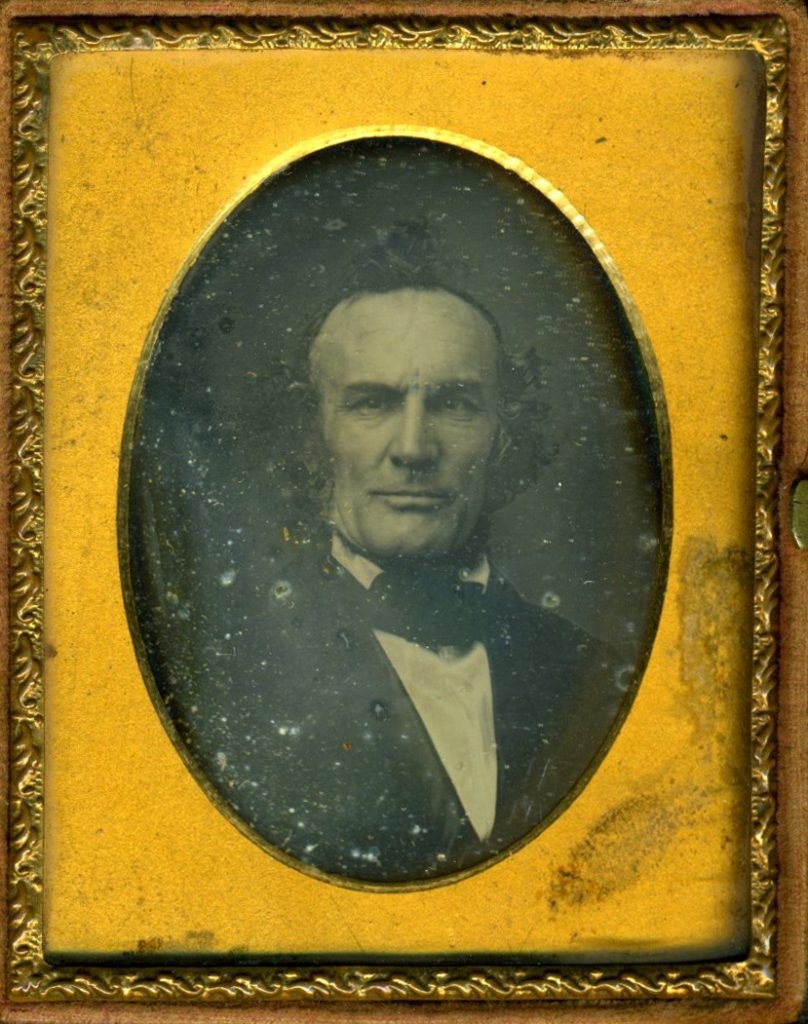
In 1824, the heliograph was introduced by Frenchman Nicephore Niepce as the first form of photography. In 1839, Niepce’s successor Louis Daguerre invented the daguerreotype. This photographic process involved long exposure times and elaborate chemical processes to develop images on polished silver-plated copper sheets. As exposure times were reduced, it quickly became commercially viable and daguerreotype portraiture grew in popularity. Here, textile artist and physician William Ashton sits proudly for the camera. Although Ashton was born in England, harsh conditions drove him to the United States where he settled in the Cincinnati area as a practicing physician and wallpaper designer.

